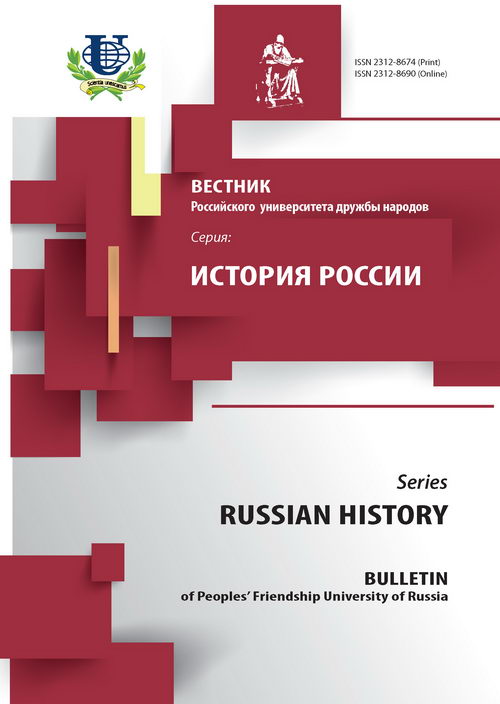РУССКАЯ ПРАВОСЛАВНАЯ ЦЕРКОВЬ И ОБЩЕСТВЕННЫЕ ОРГАНИЗАЦИИ В 1990-2000-Е ГГ.: ОСНОВНЫЕ НАПРАВЛЕНИЯ И РЕЗУЛЬТАТЫ ВЗАИМОДЕЙСТВИЯ
- Авторы: Григорьева Н.А.1, Симонова М.А.1
-
Учреждения:
- Российский университет дружбы народов
- Выпуск: № 3 (2014)
- Страницы: 129-137
- Раздел: СТАТЬИ
- URL: https://journals.rudn.ru/russian-history/article/view/4043
- ID: 4043
Цитировать
Полный текст
Аннотация
В статье рассматриваются формы сотрудничества церкви и общественных организаций России в сфере духовно-нравственного воспитания детей и молодежи, а также в координации деятельности общественных организаций и Русской православной церкви (РПЦ), механизмы взаимодействия государства и некоммерческие организации (НКО) при решении социально значимых задач. Проведенный анализ позволил установить, что в 1990-2000-х гг. были созданы условия по обеспечению доступа общественных организаций и церкви на рынок социальных услуг. Совместные ресурсы церкви и общественных организаций использовались прежде всего для социальной поддержки малообеспеченных слоев населения, в том числе детей-сирот и детей, оставшихся без попечения родителей, реализации программ, обеспечивающих защиту конституционных прав и свобод молодежи, участие детей и молодежи в социально значимых мероприятиях.
Ключевые слова
Об авторах
Наталия Анатольевна Григорьева
Российский университет дружбы народов
Email: ofisrudn2014@mail.ru
Кафедра истории России
Мария Александровна Симонова
Российский университет дружбы народов
Email: simonova2018@mail.ru
Кафедра истории России
Список литературы
- Ермолин А. Как расколдовать зомби. Либеральное воспитание против тоталитарных стереотипов. - М., 2004.
- Гражданский кодекс Российской Федерации. - М., 2002.
- НКО: вопросы и ответы: Сб. материалов. - Красноярск, 2000.
- Григорьева Н.А. Государственная политика и практика развития гражданского образования в России (1958-2006 гг.). - М., 2007. - С. 112.
- Основы социальной концепции Русской Православной Церкви. - М., 2000. - С. 17-18.
- Неправительственные некоммерческие организации и общественное просветительское движение России: История. Опыт. Перспективы. - М., 2008. - С. 16.
- Национальный фонд развития здравоохранения // www.NFRZ.ru.
- Комплексные меры противодействия злоупотреблению наркотиками и их незаконному обороту в Ивановской области на 2008-2009 гг. // www.ivanovonews.ru/33475.php.
- Сборник материалов о деятельности Общественного совета Центрального федерального округа. - Тула, 2008. - С. 49-50.
- Презентация церковно-государственной программы «Духовно-нравственная культура подрастающего поколения России» прошла в Российской академии наук // www.portal-slovo.ru/29204.php.
- Сборник материалов о деятельности Общественного совета Центрального федерального округа. - Тула, 2008. - С. 63.
- Проблемы духовно-нравственного состояния общества и подрастающего поколения. - М., 2009. - С. 24.
- IV Всероссийский кинофестиваль короткометражных фильмов «Семья России». - Кострома, 2007.
- Прокопенко А.В. Опыт взаимодействия гражданского общества и православной церкви в деле духовно-нравственного воспитания и просвещения молодежи в Центральном федеральном округе РФ (1991-2010 гг.): дис. … канд. ист. наук. - Белгород, 2010. - С. 148.
- Отчет о социальном служении РПЦ Патриарха Московского и всея Руси Кирилла // Сборник пленарных докладов XVII Международных Рождественских образовательных чтений. - М., 2008. - С. 7.
Дополнительные файлы















